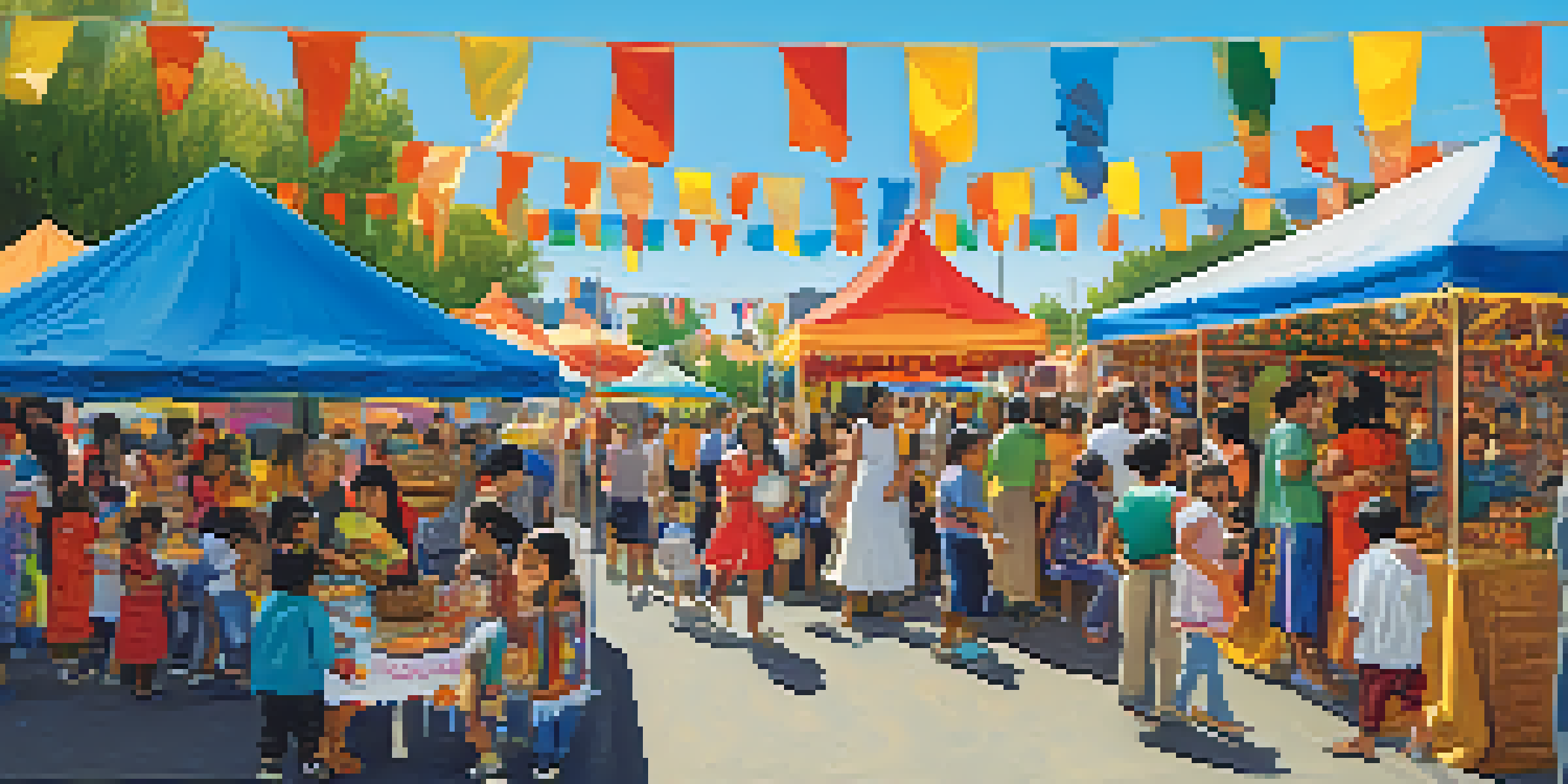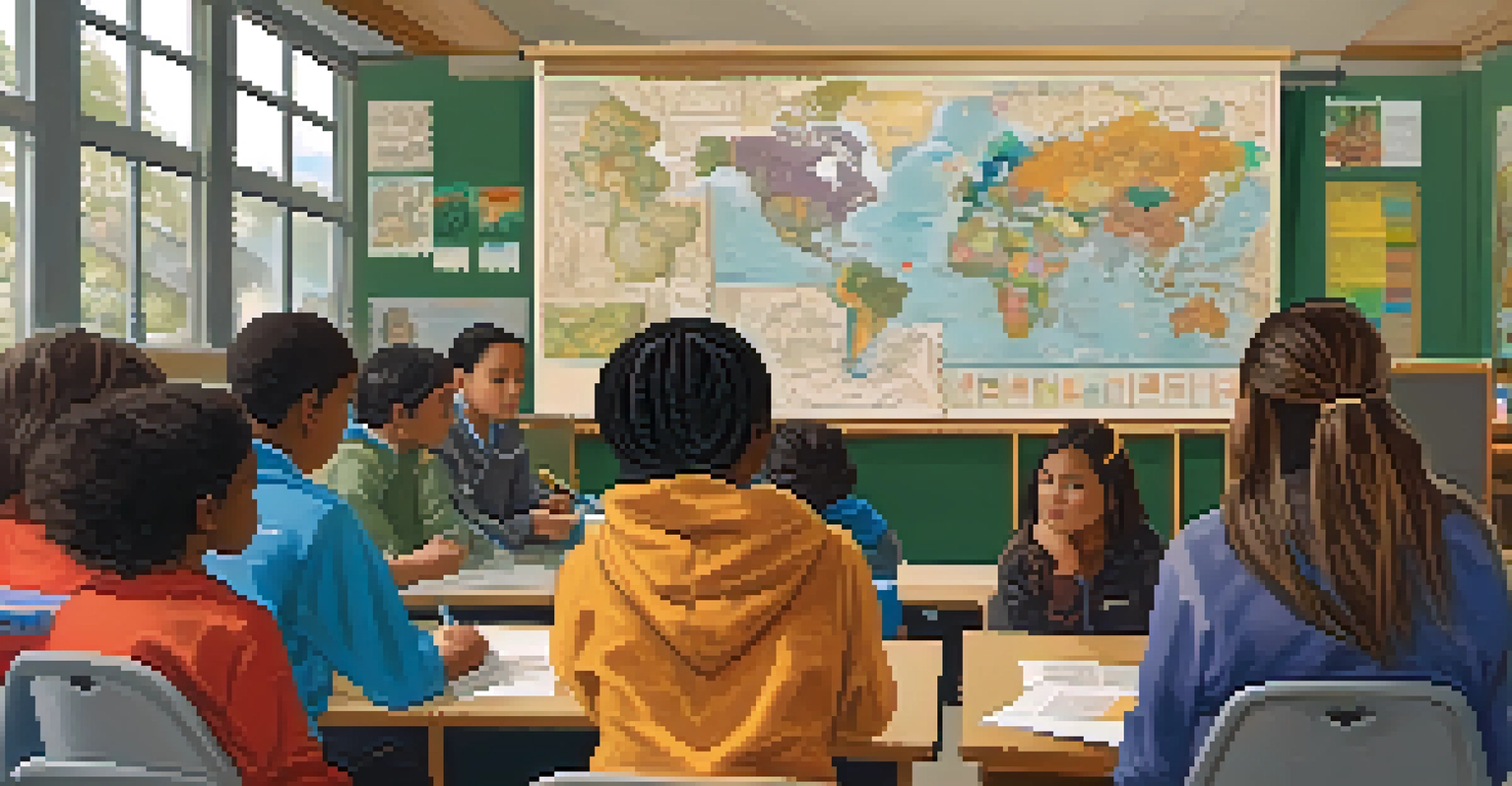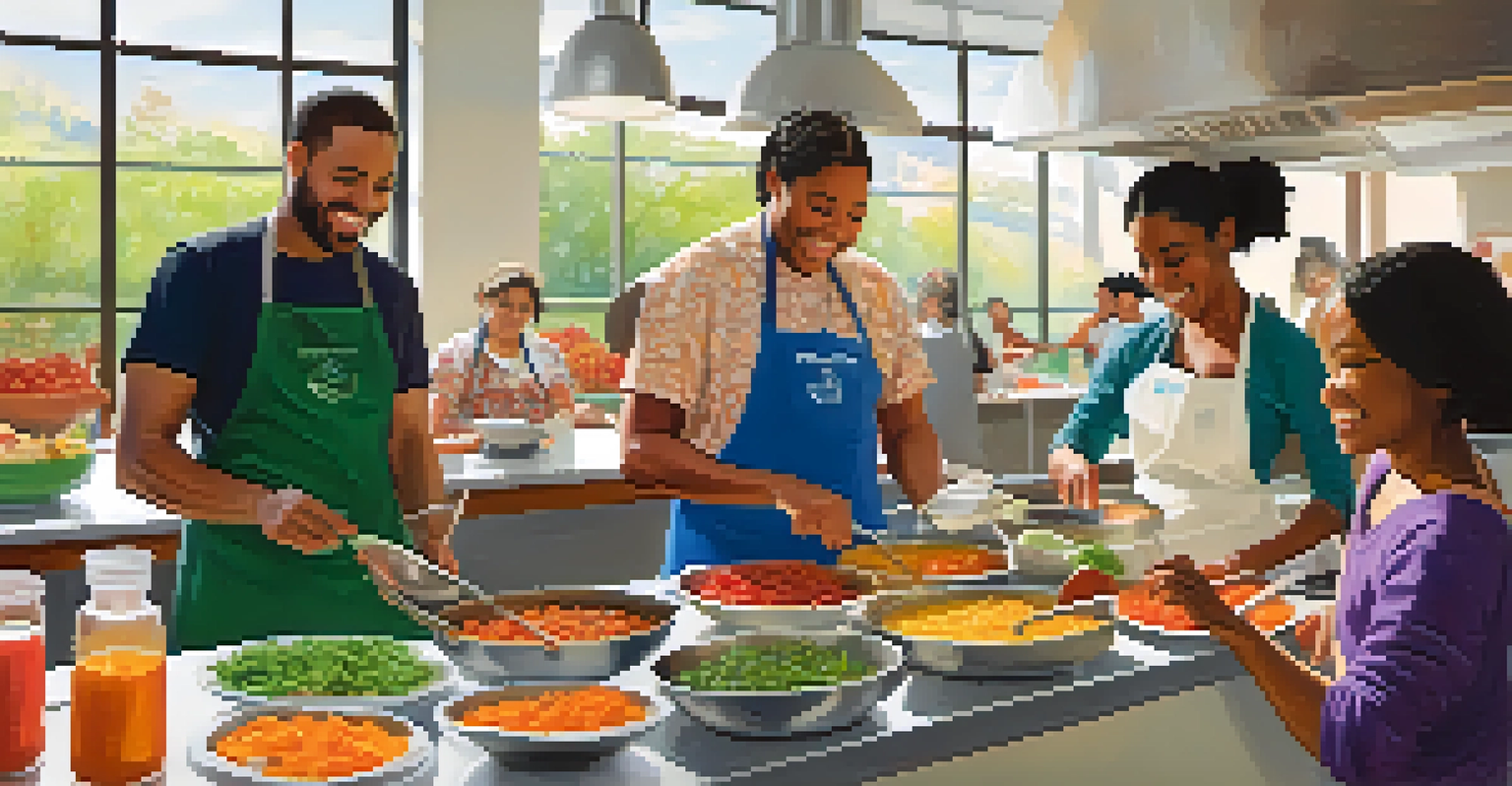Cultural Education: Seattle's Programs for Diversity Awareness

Understanding Cultural Education and Its Importance
Cultural education is a vital tool for fostering understanding and appreciation among diverse communities. It encourages individuals to explore their own identities while respecting others, promoting a more cohesive society. In Seattle, cultural education programs are designed to bridge gaps between different cultures, helping residents learn from one another.
Education is the most powerful weapon which you can use to change the world.
The significance of cultural education extends beyond just knowledge; it cultivates empathy and reduces prejudice. By immersing ourselves in the stories and traditions of others, we can challenge stereotypes and build stronger community ties. Programs in Seattle aim to create safe spaces for dialogue, where people can share experiences and learn from each other.
Ultimately, cultural education empowers individuals to embrace diversity as a strength rather than a challenge. It encourages personal growth and fosters a sense of belonging in a multicultural environment. Seattle's initiatives provide a platform for residents to engage deeply with the multifaceted tapestry of cultures that make up the city.
Seattle's Diverse Cultural Programs: An Overview
Seattle boasts a plethora of cultural programs aimed at promoting diversity awareness. These initiatives cater to various age groups and backgrounds, ensuring inclusivity. From art exhibitions to community workshops, Seattle's cultural programs create engaging experiences that highlight the richness of its diverse communities.

One notable initiative is the Seattle Art Museum's exhibitions that focus on underrepresented artists and cultural narratives. These exhibitions not only showcase artwork but also offer educational resources that explain the cultural significance behind each piece. Such programs invite visitors to reflect on their own perspectives while appreciating the artistry of different cultures.
Cultural Education Builds Empathy
Cultural education fosters understanding and empathy by allowing individuals to explore their identities while appreciating the diversity of others.
Additionally, community organizations host events like cultural festivals and storytelling sessions that allow residents to immerse themselves in different traditions. These gatherings foster a sense of connection among participants and encourage a shared appreciation for diversity. By bringing people together, these programs help to build bridges between cultures.
Schools Leading the Way in Cultural Awareness
Educational institutions in Seattle are taking significant steps to incorporate cultural education into their curricula. By integrating lessons on diversity and inclusion, schools aim to cultivate a more empathetic generation. Programs like 'Culturally Responsive Teaching' empower educators to connect with students from various backgrounds, creating an inclusive learning environment.
Diversity is not just about how we differ. It’s about embracing one another’s uniqueness.
Schools often collaborate with local cultural organizations to enhance their educational offerings. These partnerships provide students with firsthand experiences, such as field trips to cultural centers or workshops led by community leaders. Such initiatives not only enrich the students’ education but also strengthen ties between schools and the community.
Moreover, student-led initiatives, such as cultural fairs and diversity clubs, encourage young people to take an active role in promoting awareness. These projects help students develop leadership skills while celebrating their own heritage and that of their peers. Through these efforts, Seattle's schools are nurturing a more culturally aware and responsible generation.
Community Centers as Cultural Hubs
Seattle's community centers play a crucial role in fostering cultural education and diversity awareness. These centers serve as gathering places where residents can engage in various cultural activities, from cooking classes to language lessons. By offering diverse programming, they encourage individuals to explore and appreciate different cultures right in their neighborhoods.
One example is the Rainier Community Center, which hosts events that celebrate the cultural heritage of its residents. Activities like cultural dance classes and art showcases provide opportunities for community members to share their traditions. Such initiatives not only promote cultural exchange but also strengthen community bonds.
Community Centers as Cultural Hubs
Seattle's community centers serve as vital spaces for cultural exchange, offering diverse programs that promote inclusivity and strengthen community bonds.
Additionally, community centers often provide resources and support for local cultural groups. They can serve as venues for meetings, workshops, and performances, ensuring that diverse voices are heard and celebrated. By acting as cultural hubs, these centers help to nurture a sense of belonging among residents.
The Role of Local Government in Cultural Education
Local government plays a pivotal role in supporting cultural education initiatives in Seattle. By providing funding and resources, they enable various organizations to develop and implement programs that promote diversity awareness. Such support highlights the city's commitment to creating an inclusive environment for all residents.
Seattle's Office of Arts & Culture, for example, offers grants for projects that celebrate diversity and promote cultural understanding. These grants empower artists and organizations to develop innovative programs that resonate with the community. By investing in cultural education, the city acknowledges the importance of representation and inclusivity.
Additionally, government-led initiatives often collaborate with community stakeholders to ensure that diverse perspectives are included in decision-making processes. This collaborative approach fosters a sense of ownership among residents and encourages active participation in cultural education efforts. Ultimately, local government support enhances the impact of cultural programs across the city.
Building Bridges Through Cultural Exchange Programs
Cultural exchange programs in Seattle are instrumental in fostering understanding among diverse communities. By facilitating interactions between residents of different backgrounds, these programs promote dialogue and connection. Participants often share their customs and traditions, enriching the cultural fabric of the city.
For instance, programs that connect Seattle residents with international visitors create opportunities for meaningful exchanges. These experiences allow individuals to gain insights into different lifestyles and perspectives, broadening their horizons. Such interactions help to humanize cultural differences and reduce stereotypes.
Local Government Supports Diversity
The local government plays a crucial role in enhancing cultural education through funding and collaboration with community organizations to promote diversity awareness.
Moreover, cultural exchange programs often result in lasting friendships and collaborations that extend beyond the initial experience. By nurturing these relationships, participants contribute to a more interconnected and harmonious community. Seattle's commitment to cultural exchange exemplifies the city's belief in the power of diversity.
Challenges and Opportunities in Cultural Education
While Seattle has made significant strides in cultural education, challenges still exist. One major hurdle is ensuring that all communities have equal access to these programs. Marginalized groups may face barriers that prevent them from fully participating in cultural initiatives, highlighting the need for more inclusive approaches.
Additionally, as the city continues to grow and evolve, so too does its cultural landscape. This dynamic environment presents both challenges and opportunities for cultural education programs. Adapting to the changing demographics and interests of residents is crucial for maintaining relevance and effectiveness.

Despite these challenges, there is a wealth of opportunity for growth and innovation in Seattle's cultural education landscape. By actively seeking input from diverse communities and continuously evaluating program effectiveness, stakeholders can ensure that cultural education remains a powerful tool for fostering understanding and appreciation. The potential for positive change is immense when communities come together to celebrate their diversity.